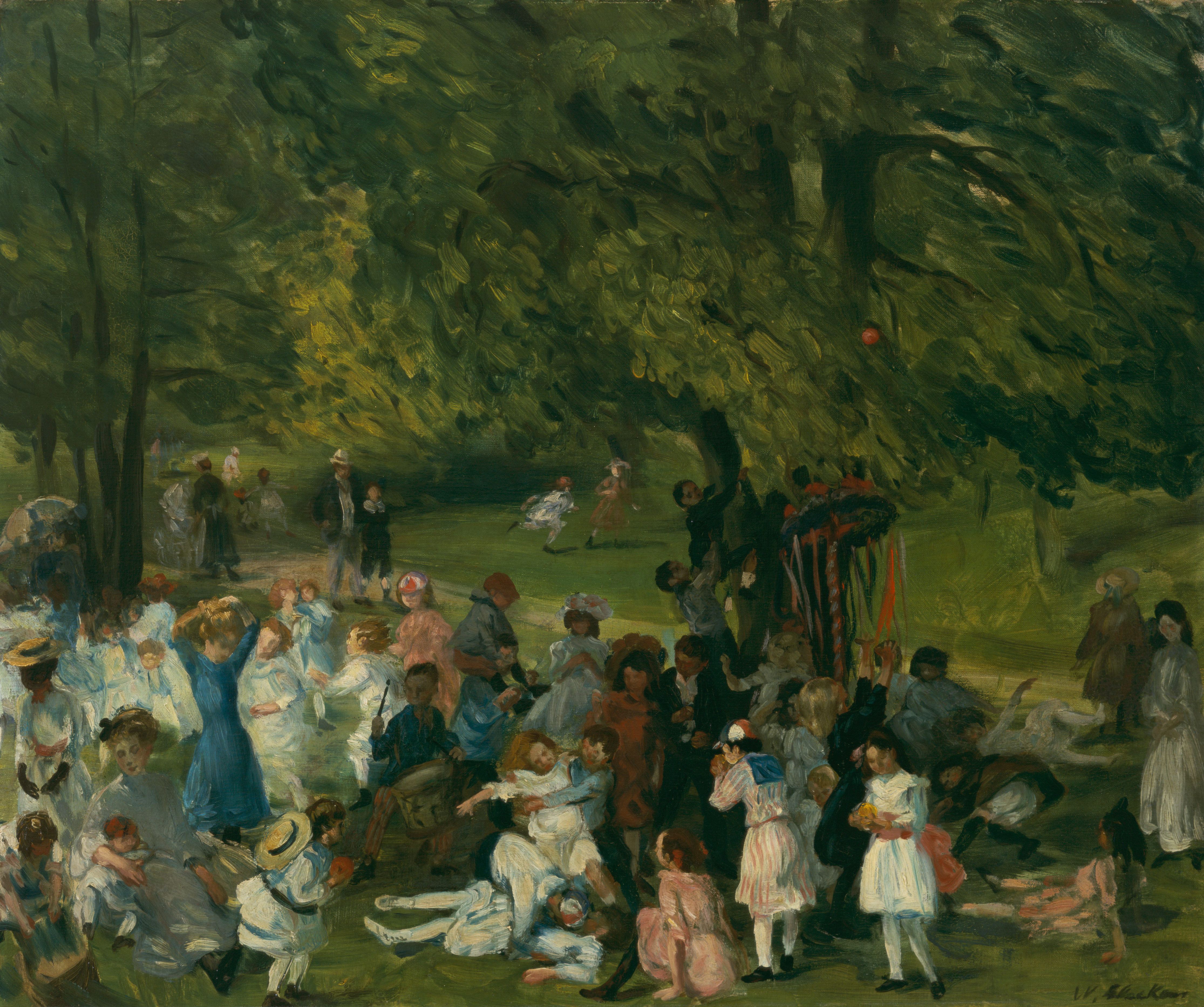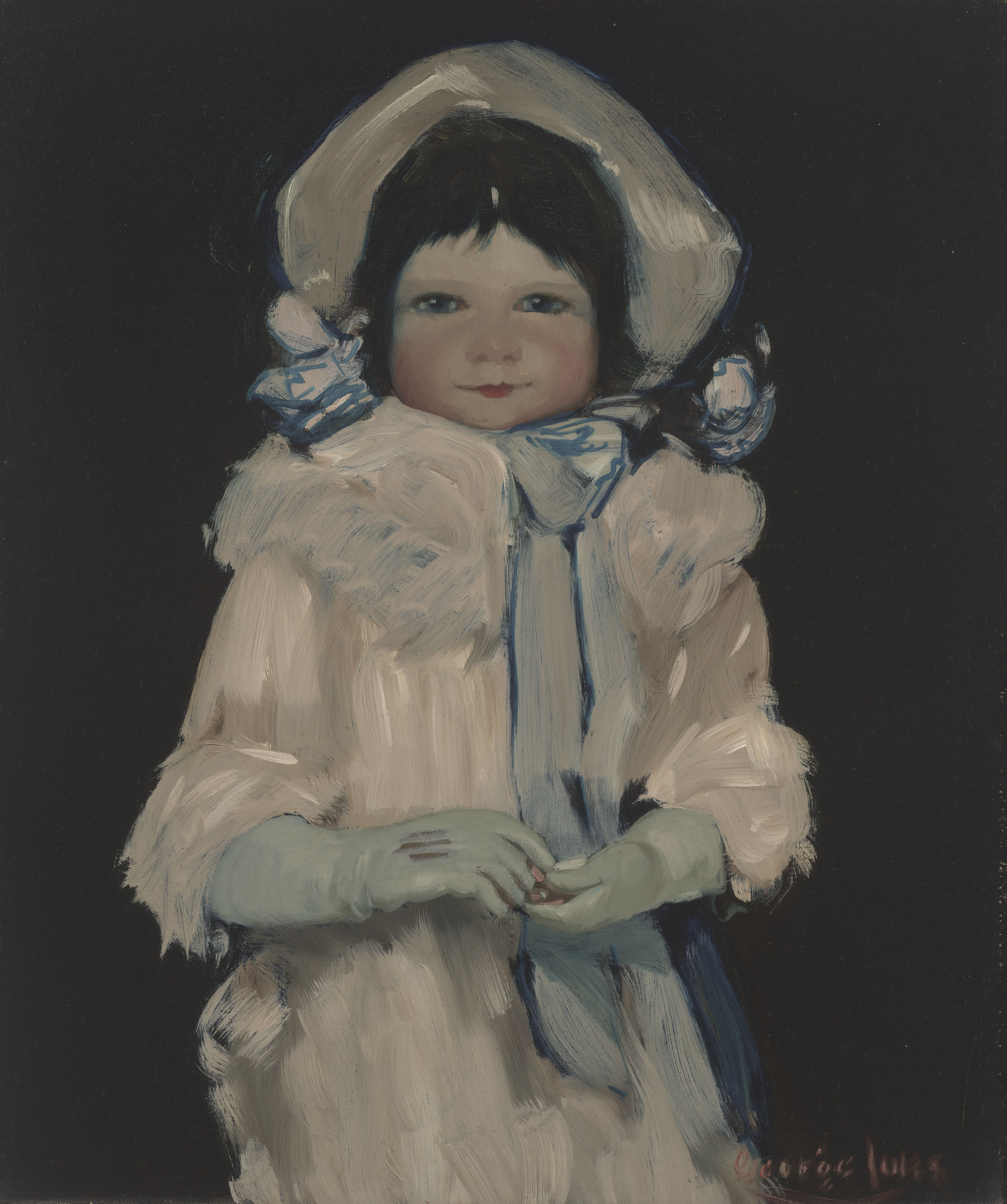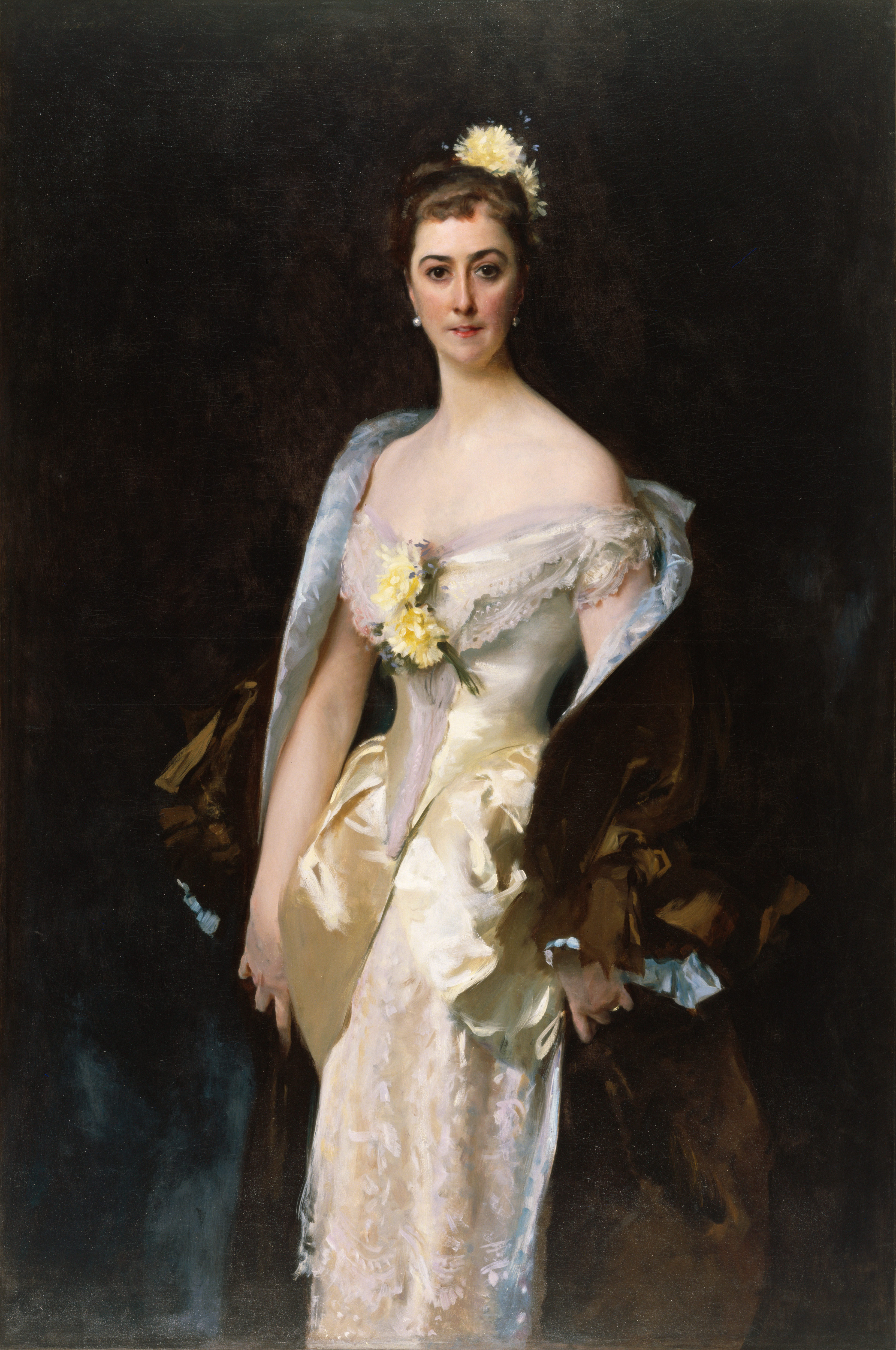May Day, Central Park

What kind of energy does this painting capture?
Glackens was a realist at odds with artistic conventions. Here, he employed dashing brushstrokes and rich, brilliant color to capture the rowdy hustle and bustle of a springtime celebration in New York’s Central Park. Well-dressed children wrestle and play in the sunlight while, in the shade, a maypole teeters, largely ignored. The artist, who worked as a newspaper illustrator, is particularly successful in conveying the energetic play of the children in a spontaneous and vigorous style.



